Bread is a great companion to any balanced meal and can tide us from day to day, all while being tasty and filling.
But, of course, sometimes whole wheat or white bread just isn’t enough; you want something soft and fluffy. An upgrade from the simple sandwich bread without being too sweet, savory, fussy, or expensive.
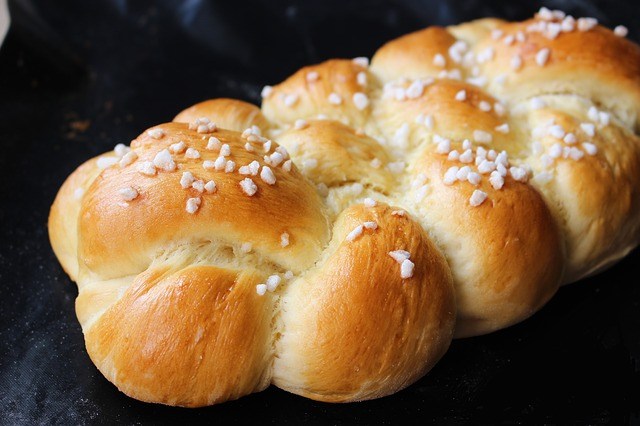
Then we have everyone’s favorite: brioche.
If you’ve never baked it before, or you’re curious about where this recipe originated, then look no further. Here we have all you need to know about brioche, and how to make this delicious treat for yourself!
Contents
What is Brioche Bread?
So, what is brioche?
Brioche bread is a light, puffy bread with a golden-brown outer shell. What differentiates brioche from other types of bread is that it’s rich in yeast, with high-fat content.
The amount of butter and eggs in its dough provides a great deal of fat and gives the bread it’s airy texture, resulting in a lovely, filling taste.
This high-fat content lends itself to versatility. Brioche is often made with chocolate or fruits added to the dough, giving it a sweeter flavor. However, it can also be served alongside savory dishes, such as those with sausages and foie grass.
A basic brioche recipe can also be tweaked to be savory or sweet. On its own, however, the basic brioche dough is a great companion to pretty much every snack and meal.
History and Origins
Brioche, as the name would imply, finds its origin in France. It was first recorded as a beloved recipe in 1404, and it first appeared as a dictionary entry in 1611.
Since its inception, brioche has swiftly gained popularity with the masses because of its flavor and cost. The ingredients aren’t difficult to come by, so for a lower price, the populous could have access to what is akin to cake.
The infamy of brioche may even have snuck into legend and history. There is evidence that the famous quote, commonly attributed to Marie Antoinette, “Let them eat cake,” may have been referring to brioche instead of cake as we know it today.
Though the ingredients have varied slightly over the centuries, it’s still a well-loved bread you can enjoy today.
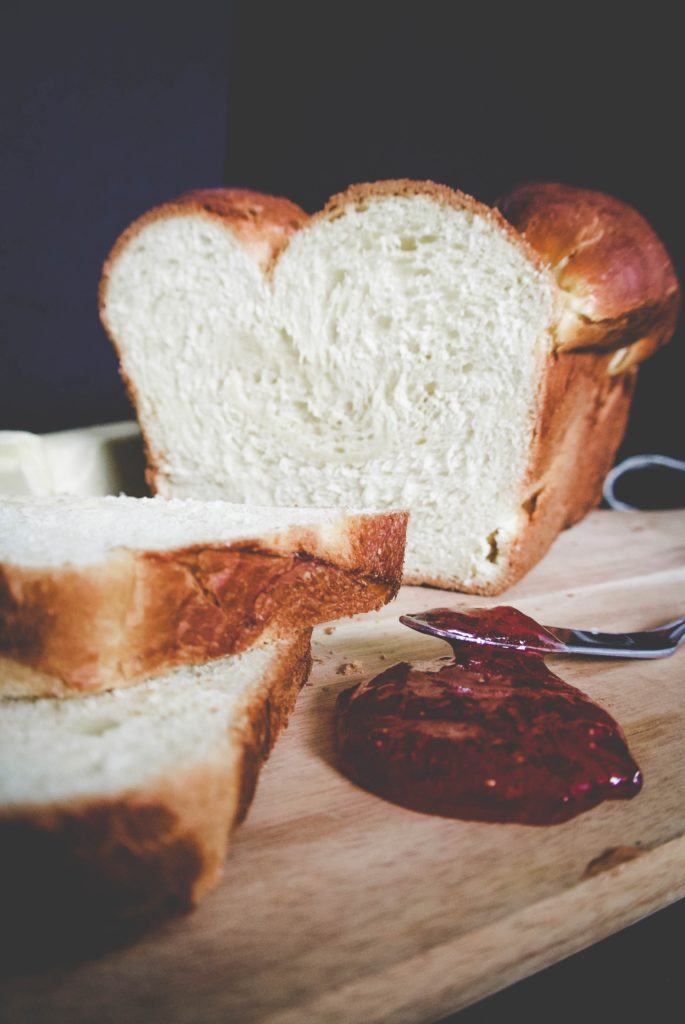
How to Make Brioche
The authenticity of a French brioche lies in its fat to flour content. Commonly, the fat to flour content is a 2:1 ratio, made with a large amount of butter and eggs.
This brioche recipe from Pretty Simple Sweet takes us through the steps on how to make basic brioche.
Equipment
Making brioche doesn’t require any special equipment, other than the usual baking supplies. Due to the amount of kneading that brioche needs, however, it is a good idea to have a mixer ready.
Brioche needs a lot of kneading because of its high-fat content. The high amount of fat in brioche means that the gluten in the dough requires help to develop; eggs and butter also make handling brioche dough a sticky and messy affair.
Brioche can be kneaded by hand, but it will take a lot of muscle and elbow grease. Traditionally, bakers have made brioche dough, as well as other doughs with high-fat content, by repeatedly slamming the dough against a marble counter.
If you’re new to baking or are used to kneading with a mixer, it may be best to pass up on brioche for now. However, if you’re up for a challenge and a bit of a workout, kneading brioche by hand could be the thing for you.
Ingredients
Dough
- 1 ¾ cups of all-purpose flour.
- 3 tablespoons of granulated sugar.
- 1 ½ teaspoon instant yeast.
- ¾ teaspoon of fine salt.
- 2 large eggs.
- ¼ cup of whole milk, or water (lukewarm).
- 1 teaspoon of pure vanilla extract.
- ½ cup of unsalted butter.
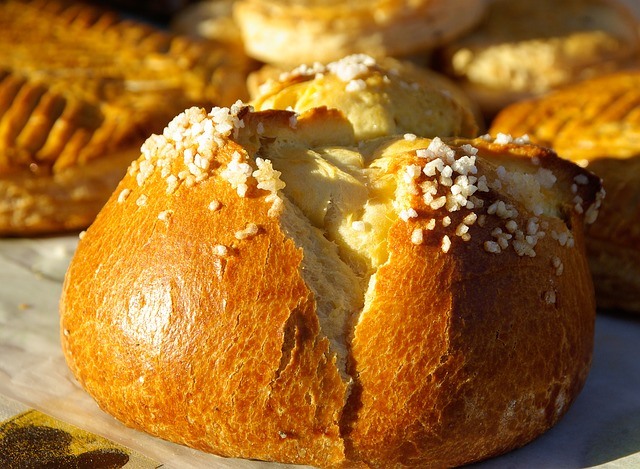
Glaze
- 1 large egg.
- 1 tablespoon of water.
Procedure
- Place the flour, sugar, yeast, and salt in a stand bowl and mix to combine. Then, add the eggs, milk, and vanilla. Mix with a dough hook on low-medium speed for four to five minutes, until you achieve a doughy consistency.
- Add butter, a few pieces at a time. Make sure that each piece is fully incorporated into the mixture before adding more. This is going to take a few minutes.
- After all the butter has been added, mix the dough for 10 more minutes until the dough pulls away from the sides of the bowl completely. This mixture will be soft, oily, and sticky.
- Place it in the fridge for at least half a day to overnight (and up two days). This will allow the bread to rest and rise.
- Grease a loaf pan. For these measurements, you will need an 8 ½ x 4 ½-inch loaf pan.
- Divide the dough into eight equal pieces. Form the dough into a ball, arranging each piece on the bottom of the pan. Cover the pan and let these pieces rise at room temperature until they’ve almost doubled in size. This will take about one to two hours; the warmer your area is, the quicker they will rise.
- Preheat the oven to 350 degrees Fahrenheit.
- Prepare the glaze. The glaze will require one large egg combined with one tablespoon of water. Brush the top of the loaf with a thin layer of glaze.
- Place the loaf in the middle of the rack. Baking time is about 30-35 minutes, or until the center of the loaf reaches a temperature of 190 degrees Fahrenheit. The bread should be cooked through with a golden top.
It’s best to eat brioche as soon as it’s cooled to get that fresh, crisp taste. Your brioche will stay fresh for 24 hours, as long as you keep it in an airtight container.
For long-term storage, brioche can be stored frozen for up to two months.
This video shows an example of a basic brioche recipe.
Brioche Baking Tips and Tricks
Because of its high-fat content, brioche can be a tricky dough to work with.
Here are a few techniques to help you deal with this tricky dough and save you a headache in the kitchen.
Use Room Temperature Butter
Butter is a key ingredient – and one of the key problems. As such, you’ll want as much help incorporating the butter as you can get.
While it should be soft enough that it won’t stay lumpy for long, it still needs to remain solid enough to handle. The trick is getting it to room temperature; leave out your butter an hour before baking.
If you’re kneading by hand, you have an advantage; finding lumps of butter by hand is much easier than by eye.
Let the Dough Proof Overnight
If you’re pressed for time, it is entirely possible to bake brioche that has risen for half a day. However, this can make the dough a bit hard to work with.
If you can, refrigerate the dough overnight. Not only will it be easier to shape the following day, but it will also give your dough a better flavor.
Why? The yeast will have enough time to work its magic, giving your dough a great shape and taste.
If you find yourself dealing with tougher dough while trying to shape your brioche, it may need a bit more time to proof. If this happens, just pop your dough back in the fridge and check back half an hour later.
Let the Crust Form
Being over-eager can cause your brioche to fall flat. Before even opening the oven door to check on your bread, make sure that the crust has already formed. This will take about ten minutes.
Opening too early will make your brioche deflate. Once your brioche is baked, let it cool first.
The residual heat in the bread is still necessary to cook the bread; slicing it too early will let heat escape and can mess up the shape of your bread.
Special Brioche Ideas
The great thing about brioche? It’s an ideal base recipe for trying out different flavor and texture combinations.
If you’re tired of the usual brioche, you can easily tweak the recipe to incorporate something new and fun!
The following are a few ideas on how to tweak your classic brioche recipe. Want a treat? Want something healthier? Need a specific flavor to complement a meal? All it requires is a few tweaks.
Chocolate Chip Brioche
Chocolate chip brioche is one of those classic takes on sweet brioche. It’s a great alternative to cupcakes; shape it the right way and you can barely tell the difference.
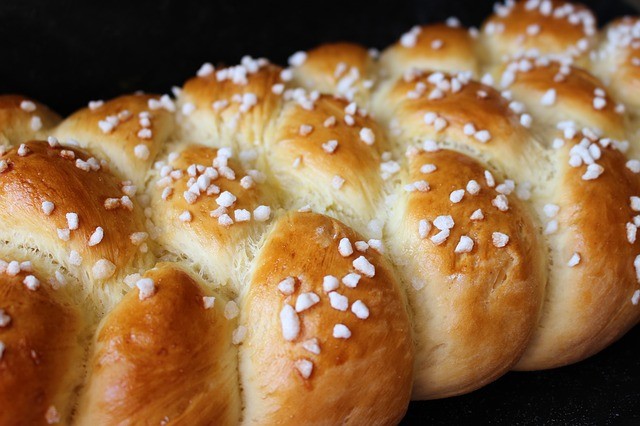
As a plus, it makes a great breakfast and snack option, and kids are sure to gobble up every single one of them.
This recipe from Chocolate, Chocolate and More takes us through the steps of making a chocolate chip brioche that everyone is sure to love.
Fruit Brioche
For a bit of a healthier approach, fruit brioche is also a great way to change up the basic brioche dough. The right fruits are also a great way to usher in a new season.
Try pineapples for summer brunch brioches, or raisins and dates for a holiday reunion dessert.
This recipe by KitchenAid uses fruits and nuts to bring flavor to the basic brioche, so you can add some crunch to your sweetened bread.
Other Brioche Shapes
The basic brioche recipe from Pretty Simple Sweet is a good loaf shape, perfect for snacks with jam. But that’s not all that you can have with brioche.
Just like its flavor, you can also change the shape of brioche for different events and meals. The following are a few ideas from the Kitchn on how to shape your brioche dough.
Grande Brioche a Tete
Grande brioche a tete is the closest you can get to bread looking and tasting like cake. The grande brioche a tete is made by shaping the dough so that it appears like layers on a cake.
To get this look, divide the dough in half. Pinch off a bit of dough from each half, setting it aside. Then roll the two large portions into two balls.
The dough you set aside should be stacked on the larger portions. Bake in a fluted brioche pan.
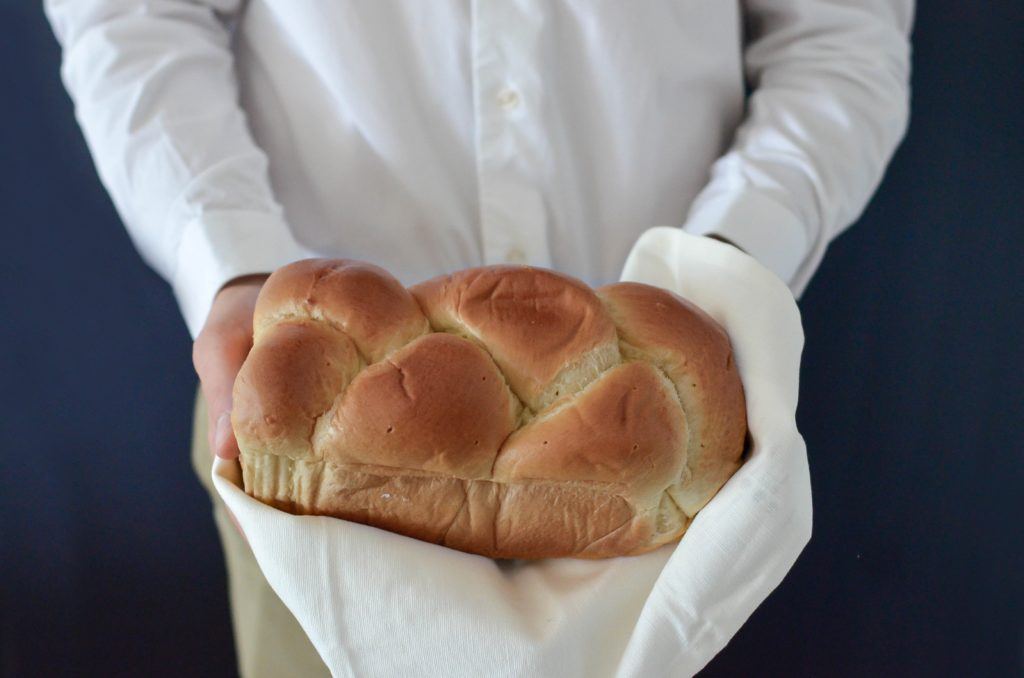
Petit Brioche a Tete
If you want your brioche to look like cupcakes, the petite brioche a tete is the way to go. First, divide the dough into 14 portions, rolling 12 into balls and transferring to fluted mini-brioche tins.
The remaining pieces should be divided further into twelve smaller pieces, rolled into balls, and pressed on top of each of the larger pieces.
Dinner Rolls
Making your brioche into dinner rolls is easy and quick. Simply divide the dough into small portions, making about 16 to 20 pieces. Roll the pieces into balls, put them in a baking sheet, and bake.
The great thing about shaping brioche is that you can reform it nearly as much as pie crust. Your brioche can be shaped into lovely works of art that can rival even the most experienced of pie makers.
This page shows a few ways on how to elevate the shape of your brioche into an art form.
And here’s a demonstration of braided brioche in this video.
A Bread for All Occasions
If there’s one bread that you can have with pretty much every meal, it’s brioche. Its versatility lends itself to meals from breakfast to dinner, with snacks in between.
With the many different flavor options, it’s hard to get tired of it. All you need to do is tweak the recipe with a new fruit or nut, and you have a new flavor and texture!
While brioche can be a bit daunting to try at first, this bread is a huge pay-off. With an electric mixer, brioche doesn’t take more than thirty minutes to make, while the rest is simply spent on waiting for the bread to rise.
So, if you’ve got a few hours to spare on your weekend, why not give this tasty bread a try?
What’s your favourite brioche recipe?
